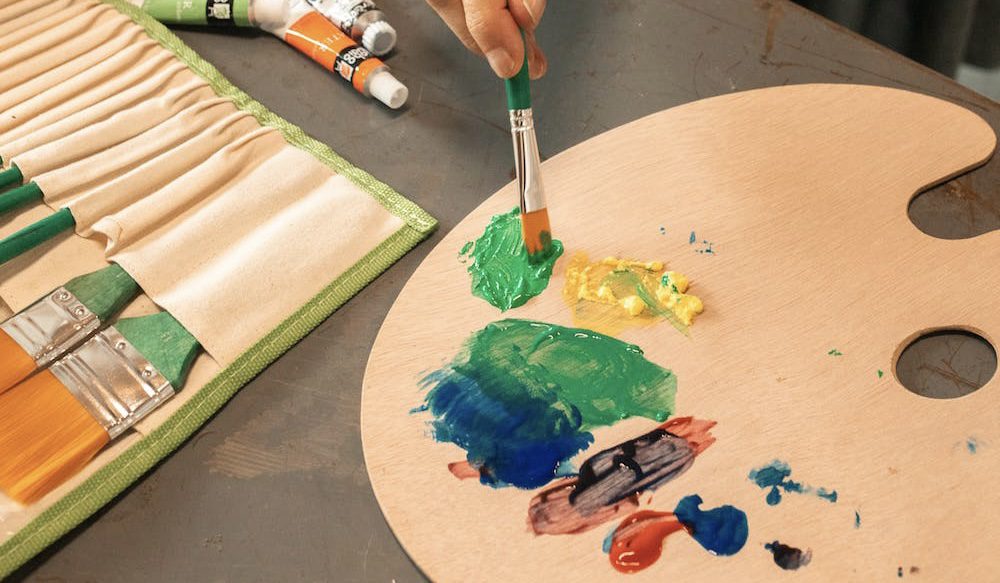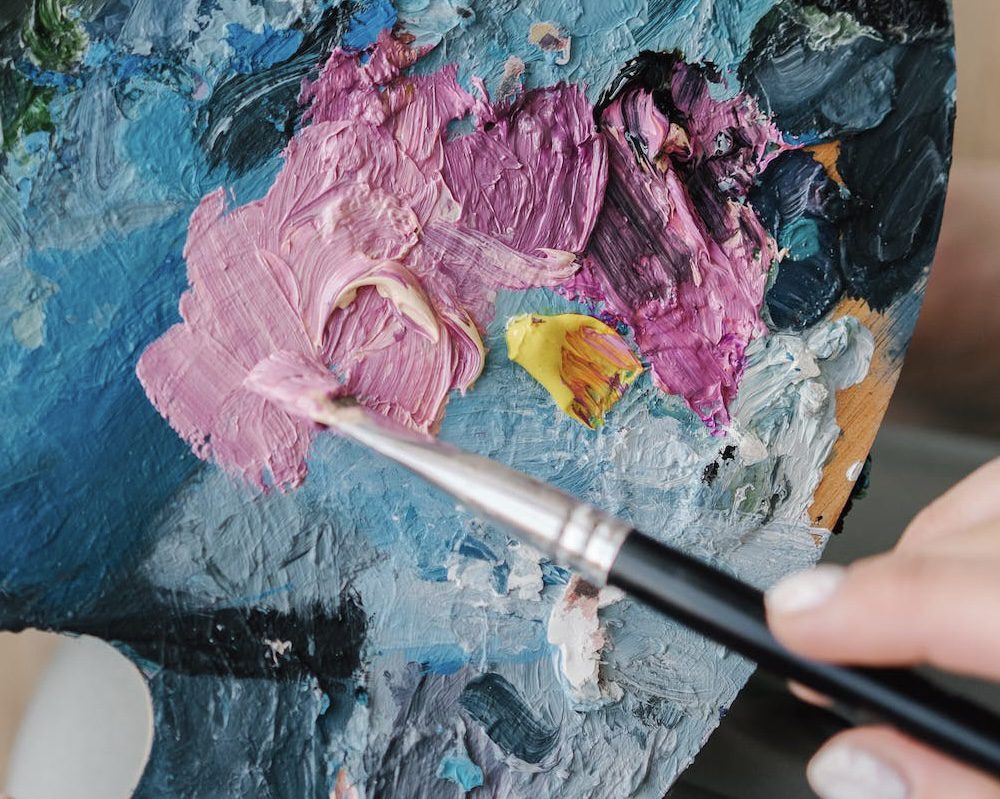Acrylic paint is probably the most commonly used painting medium for artwork in students, first timers, and much more. However, there are some important things to note about painting with acrylic paints that can greatly affect the outcome of the work you are producing. (Scroll down further for just the tips)
Important Materials to Have:
Before getting into any tips or tricks, I want to make sure there is a clear understanding of the requirements or tools needed to begin painting with acrylic.
First, you are going to need to make sure that you have a cup for water. Acrylic paint is water soluble, so mixing your brush with water is the perfect cleaner for making your brush good as new after usage.
It’s important to make sure that it is a designated “painting” cup or something disposable like a paper cup. This is because acrylic paint can stain on glass or any surface really, so preparing for the paint to stain in advance is vital.
Second, you are going to want a palette. This is where you will be mixing the paint. Typically, plastic versions of palettes are used, but if you are opting for a more eco-friendly solution, a wooden one would be perfect.

This one might be self-explanatory, but paintbrushes are a necessity for entering the world of painting. For acrylic, because of how thin the consistency is, I recomend a very soft and rounded paintbrush. The squared off brushes tend to be a little harder and can leave streakier marks behind for how transparent acrylic is.

These ones on amazon can be interchangeable with acrylic and watercolor because of how soft they are.
After this, you are ready to go! As long as you have the canvas or surface that you will be painting on.
Tip #1: Make an underpainting
Since acrylic paint can be so thin, especially the cheaper kind (which you will probably want to start out with to get the hang of it), you will want to make an underpainting (Grisaille method preferred).
With an underpainting showing all of the values, it makes the thin acrylic paint work in your favor, adding new hues to different sections of the canvas.
Tip #2: Wait for each layer to dry completely
In my experience, acrylic paint dries fairly quickly. Not waiting for it to fully dry before adding a new color can quickly muddy the paint, and not only muddy it, but can take off the thin layers of paint that are not completely dry.

Tip #3: Add titanium white to your paint to make it thicker
Obviously white paint is going to lighten your color a lot. I find it much easier to paint the mid tone with some white in it to get a thick base, and paint your shadows over the top of that since its so thin.

